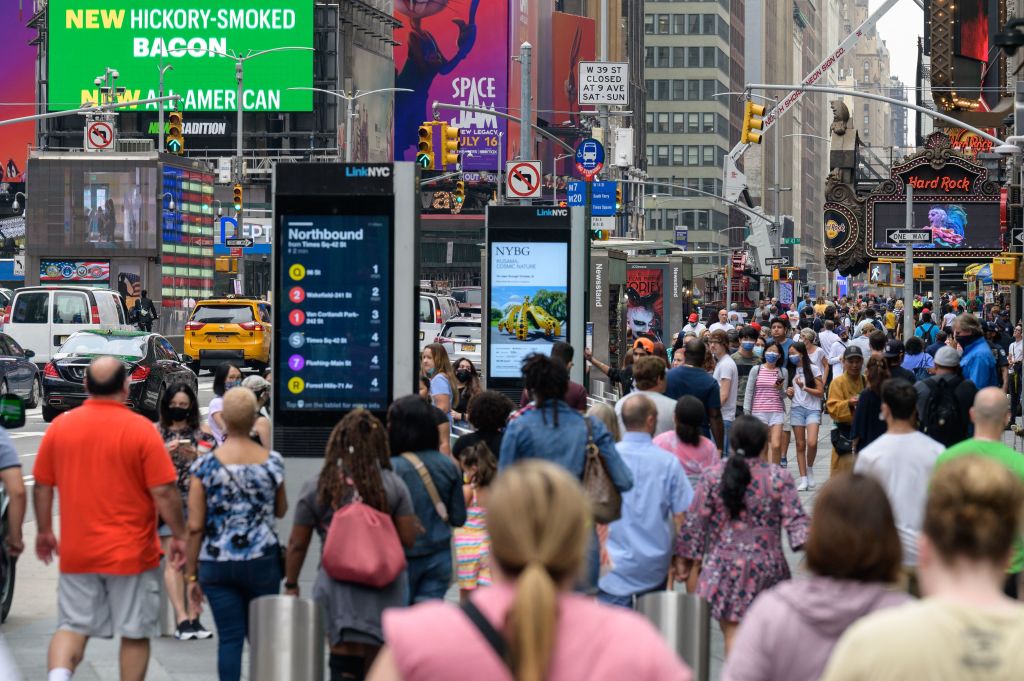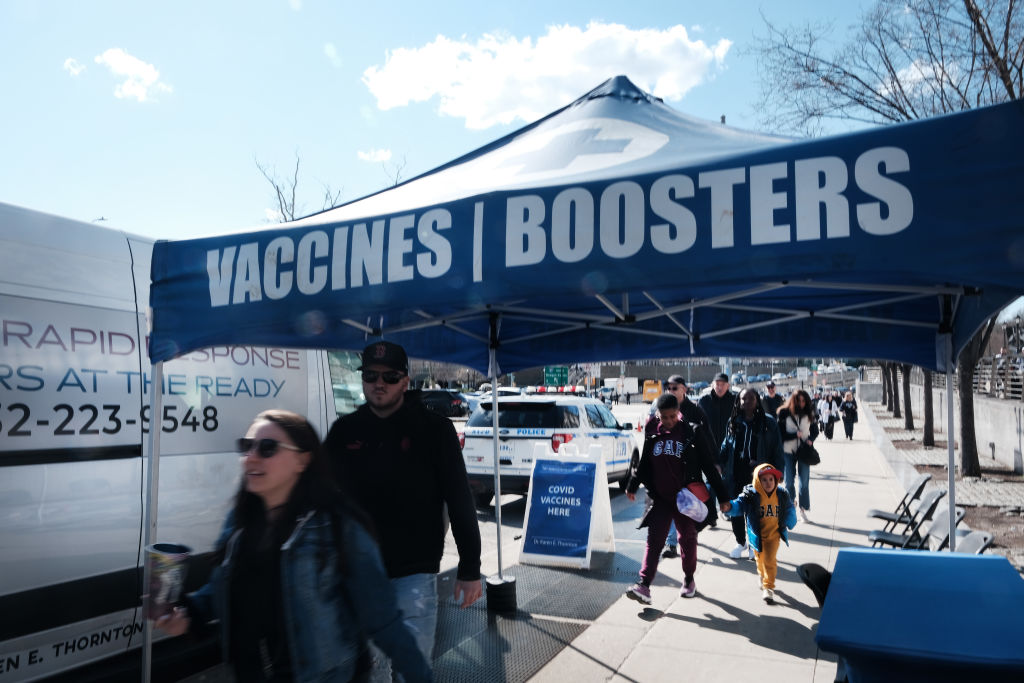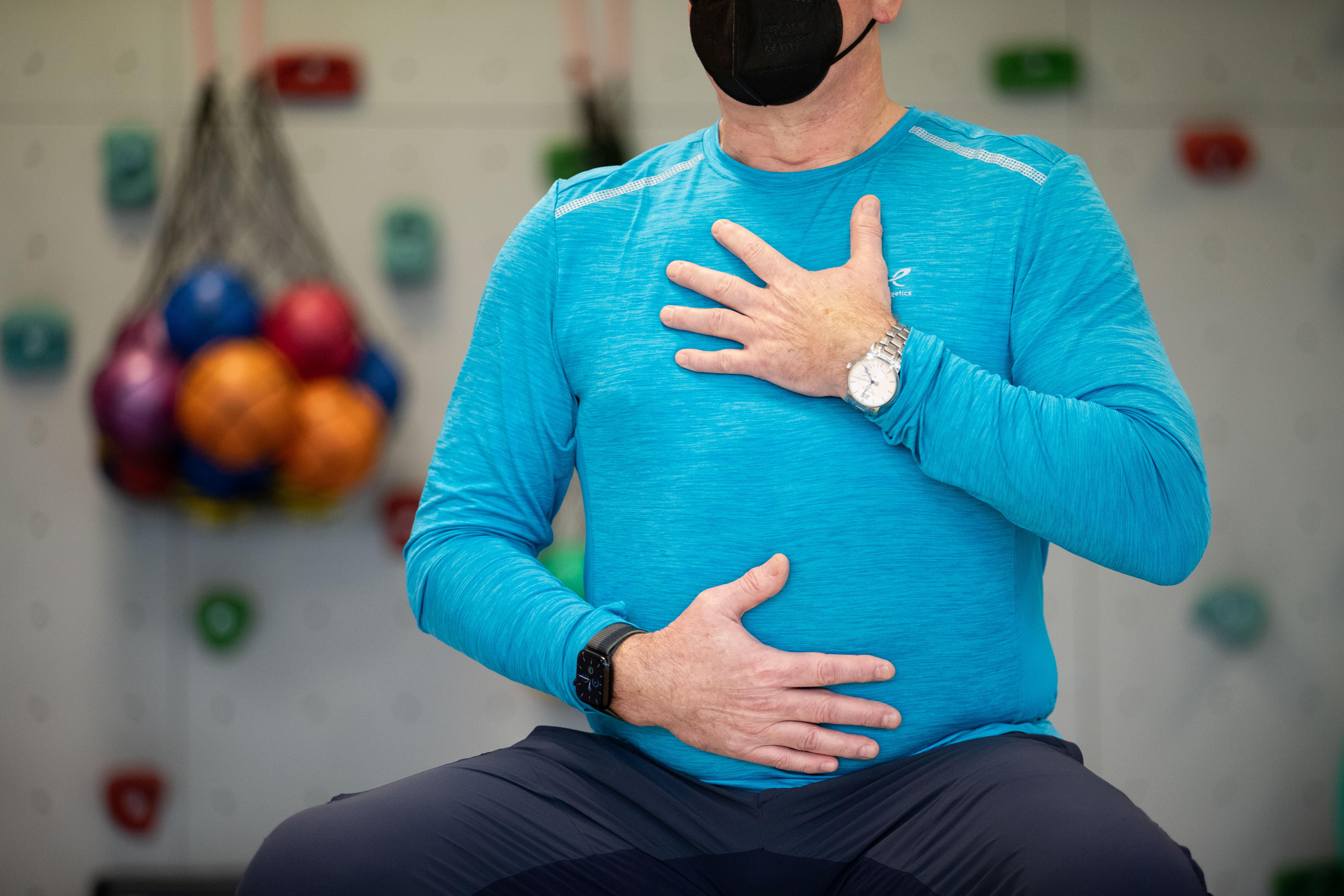The COVID-19 subvariant estimated by New York state health officials to be substantially more contagious than the first descendant of the potent omicron strain now accounts for up to 73.3% of all virus circulating in the region that encompasses the Empire State, according to new CDC data released Tuesday.
Prevalence of BA.2.12.1, which health officials say appears to be at least 25% more transmissible than BA.2 (which is said to be more 30% more contagious than its predecessor, omicron), in the agency's New York region has been increasing at a far faster rate than nationally, the latest weekly update shows.
The CDC puts it at 66.3% (at least) of COVID cases in the New York region, which for its purposes also includes New Jersey, Puerto Rico and the British Virgin Islands, though says BA.2.12.1's share of cases could be higher. Either way, that subvariant is the dominant strain locally, while the first omicron variant, BA.2., has retained its national dominance in recent weeks ( 56.4% of cases vs. 42.6% for BA.2.12.1).
Given the latest trends, though, BA.2.12.1 should assert its dominance in the United States before the end of this month.
Get Tri-state area news and weather forecasts to your inbox. Sign up for NBC New York newsletters.
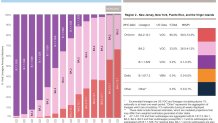
While no scientific evidence to date links BA.2.12.1 to more severe COVID-linked illness or reduced vaccine efficacy at this point, the heightened transmissibility appears clear. New York state, for example, almost half of the 79 U.S. counties designated by the CDC as having a high COVID risk to the community.
None of the high-risk U.S. counties, according to the CDC, are in New York City, but the five boroughs appear to be experiencing a trickle-down effect of sorts. All boroughs except for the Bronx, which has the second-lowest full vaccination rate among the five, are now considered medium COVID alert areas by the CDC.
The NYC health department's variant tracker doesn't explicitly break out subvariant BA.2.12.1, but it does indicate BA.2-linked subvariants account for the overwhelming number of cases over the last month and a half or so. And COVID positivity rates in the city are rising in accordance with the heightened transmission, data shows.
Many more BA.2.12.1 infections may go unreported. The share of positive COVID samples genomically sequenced to isolate variants is a fraction of the total confirmed cases. The city completed that exhaustive work for just 4% of its cases in the latest week of data and the state has cumulatively sequenced less (3.65%, per the CDC).
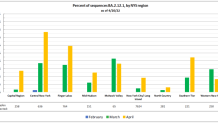
In the Central New York region, which has experienced the most elevated case rates in the state since March, BA.2.12.1 was first detected in February and rose to 77% of sequences by April. The subvariant also accounted for more than half of sequences in the Finger Lakes region and more than 25% of samples sequenced in the state's Capital, Mohawk Valley, and Southern Tier regions, through April 20.
All five of those regions have a higher-than-statewide-average reinfection rate per 100,000 residents, with Mohawk Valley the highest among them (7.1). New York City's reinfection rate remains below the rolling state average (3.5 vs 4.6 reinfections per 100,000 residents) but both of those numbers have been ticking up lately.
New York's reinfection data doesn't factor in vaccination but its breakthrough case and hospitalization dashboard does -- and the story is similar there.
The rolling rate of new breakthrough cases per 100,000 residents has risen every week since March 7, state data shows. The weekly increases appear to have become most pronounced in late March, vaulting from 13 new breakthrough infections per 100,000 residents the week of March 21 to 34.2 the week of April 25, which is the latest data available.
One look at the CDC's COVID community level map shows the apparent impact.
New York's rolling hospitalization rate has also increased for fully vaccinated people but to a much lesser degree. Hospitalizations are a lagging factor, so that jump didn't happen until mid-April. The rolling breakthrough hospitalization rate nearly tripled from the week of April 11 (.54) to the week of April 18 (1.48) though again, multiple factors could be at play. State officials haven't speculated on the cause recently.
While much remains unknown, scientifically, about BA.2.12.1 at this point, health officials and experts are paying acute attention to the numbers.
New York City raised its COVID alert level to medium last week as cases surpassed a rate of 200 per 100,000 people in the five boroughs. It marked the first time the health department has adjusted that level since debuting the new system under Mayor Eric Adams' administration earlier this year.
No new COVID protocol will be implemented in the city at this time, but should the hospitalization rate top the CDC's higher risk threshold of 10 per 100,000 and the 200 per 100,000 case rate hold, indoor mask mandates could return citywide.
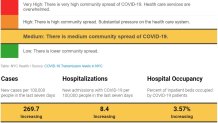
Experts hope -- and believe -- that won't be necessary.
While new case rates are ascending, they remain well below what they were during omicron's peak surge in January. Most importantly, hospitalizations and deaths, the far more important metrics from a public health perspective, remain on the decline.
In New York City, rolling COVID hospitalizations over the last seven days are up 7.5% compared with the averages for the prior four weeks, which the city says is stable. The death rate continues to drop. Statewide, 2,369 people are hospitalized with COVID as of Tuesday's report, more than doubling in just the last month. That total, though, is less than a fifth of where hospitalizations stood during the January surge.
And it's eight times lower than the record 18,697 New Yorkers hospitalized with the virus in April 2020.
More Coverage
That's why officials urge continued caution regarding COVID protocol but no panic.
"We have come a long way in the past two years, so let's continue to use the tools we know help protect against, treat and prevent serious illness from COVID-19," Gov. Kathy Hochul said in a statement -- as she herself works to recover from last week's diagnosis. "I know first-hand how tests can help stop the spread to our vulnerable loved ones, so let's keep using this critical tool. I also encourage every New Yorker to make sure you are fully vaccinated and up to date on your booster doses. And if you test positive, talk to your doctor about available treatments. This is how we will continue to move forward through the pandemic safely."

